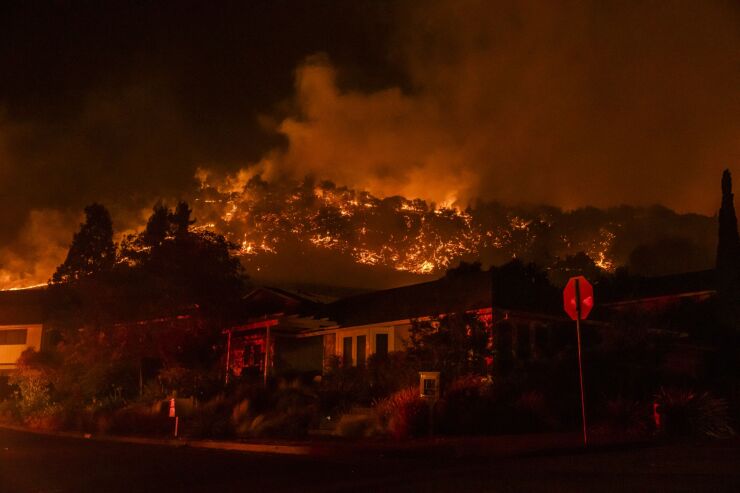(Bloomberg) --A summer that has already seen water crises and wildfire smoke is rapidly becoming an inflection point in the pitched battle between climate change and the price of homeowners' insurance in the US.
AIG's decision comes on the heels of both State Farm and
But the AIG move stands out, both because of the broadness of its reach — touching states that are not normally considered in the high-risk pool — and what that breadth says about the years to come. A warming world means rising waters, stronger storms, more wildfires and more places experiencing extreme weather and natural disasters. Anyone in a high-risk area, whether the woods of New Jersey or the floodplains of Illinois, could see their access to insurance affected.
Insurance experts say the industry's reaction tracks. Natural-disaster losses from 2020-2022 in the US caused a record $275 billion in insured damages, according to the American Property and Casualty Insurance Association. Those figures, combined with the impact of high inflation on replacement costs, have insurers scrutinizing vulnerabilities beyond traditional regions of risk.
"The risk is unprecedented and the peak risks, which are what cause insurance companies to worry about insolvency, are the ones having the most change with climate," said Nancy Watkins, a principal at
At the core of the problem is a disconnect between the rising perils of climate change, how those perils are assessed by insurance companies and how much customers are willing to pay to protect against them.
Traditionally, insurers have looked backwards to predict risk, and some states even
When homeowners can't afford or access private insurance, state-backed insurers of last resort have to step in. More than 50 years ago, for example, the industry calculated that flood insurance was a bad bet. Now, over 90% of residential flood insurance in the US is underwritten by the National Flood Insurance Program through the Federal Emergency Management Agency.
Watkins said now a number of other state governments are beefing up the subsidized insurance market to deal with private-insurer retrenchment. Colorado, for example, which experienced destructive wildfires in early 2022, is debating adding a state-backed fire insurance option for those who can't access the private market. North Carolina has something similar in place for coastal properties.
"Simply put, climate change has now put us in a place where insuring certain properties is not actuarially sound," said Matthew Eby founder of First Street, a nonprofit that uses data to make climate risks more transparent. "This is a pattern that has only just begun and will dramatically accelerate as the climate continues to warm."
To contact the author of this story:
Leslie Kaufman in New York at






